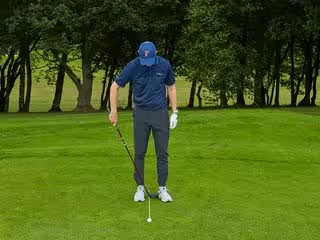Golf Monthly created this content as part of a paid partnership with Benross. The contents of this article are entirely independent and solely reflect the editorial opinion of Golf Monthly.
For many amateur golfers, adding a fairway wood to the bag can be a shrewd move – but without the right expert tips they can quickly become frustrated with poor strikes and unpredictable misses.
Fairway woods provide a great alternative to driver on certain holes, or offer players the chance to attack that long par-5 that always seems out of reach, but how can we ensure consistently sweet strikes?
In this video and article, Golf Monthly Top 50 Coach Ged Walters shares three top tips for better ball striking with your fairway woods…
1. Set-Up
For many amateur golfers, fairway woods can be tricky to hit… and there are a couple of reasons for that. Firstly, the face of the club is quite small in relation to the size of the golf ball and secondly we try to sweep the ball in an attempt to make it travel a long distance.
We don’t want to treat a fairway wood swing like we would a driver. The club will brush the ground, and it might have a ‘sweeping’ motion, but our intent is crucial.
One of the biggest differences is your set-up, as a lot of golfers either have their ball position too central or go extreme and adopt more of a driver position. Set-up with the ball in the middle of your feet, move your lead foot towards target around 3 or 4 inches, and then move your trail foot back to take your stance.
You must go through a routine each time to ensure your ball position is correct, and to give yourself the best chance of striking it well consistently. Try using the clubhead width with your fairway wood as a guide to determine the correct ball position just inside the lead foot (as shown in the image below).
(Image credit: Paul Severn)
2. Intent
You also need to consider your intent. The golf ball is on the ground, so contact with the turf is necessary to execute the shot. It’s important not to try and get underneath it, however, as this often causes us to lean back and will result in topped and thinned shots.
This is also the case when the ball is too far back in the stance or when players lean back in the swing. Instead, imagine you are hitting an 8-iron, you ideally want the…
..
Click Here to Read the Full Original Article at Golf Monthly…
